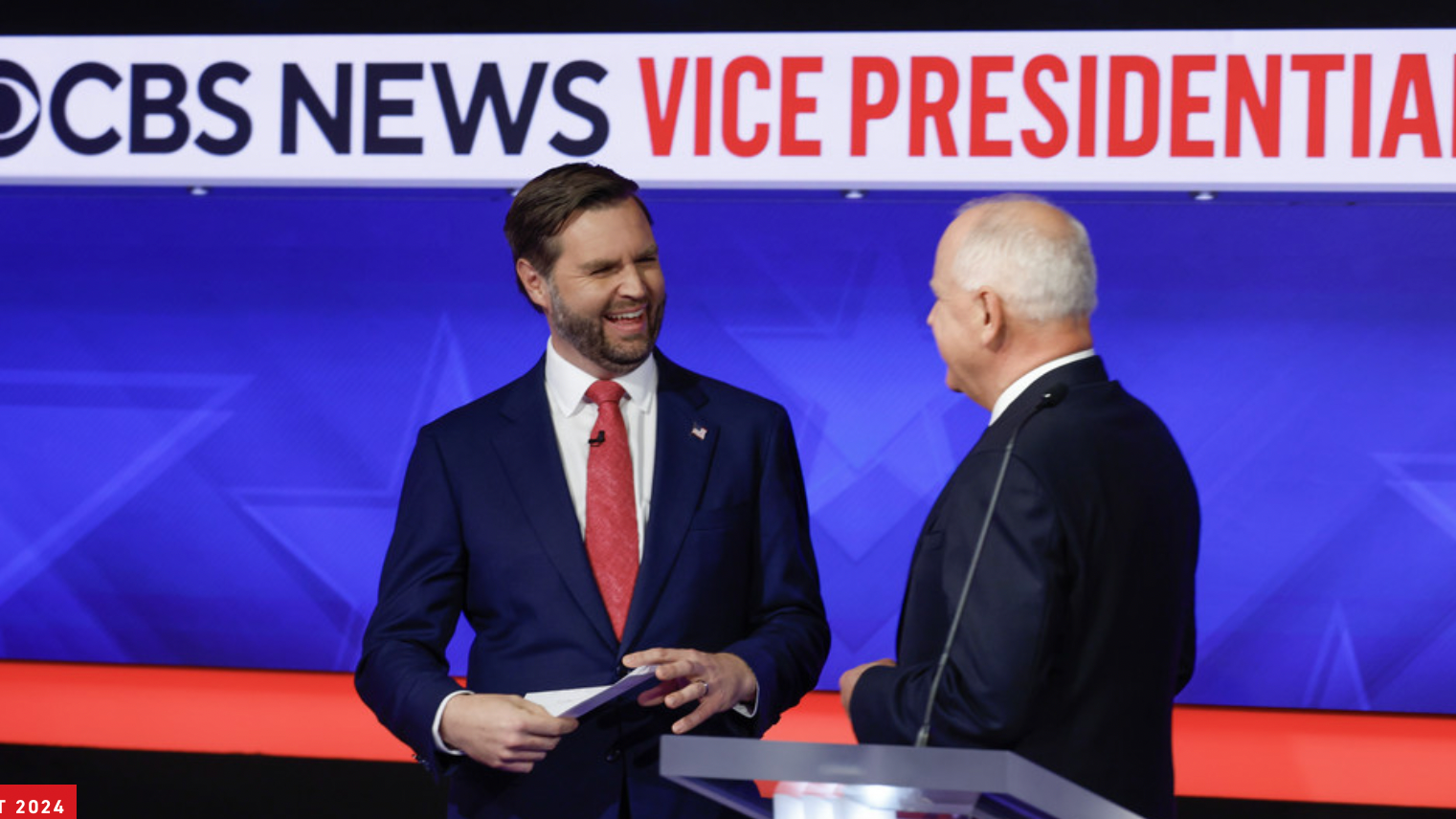Democratic presidential nominee Vice President Kamala Harris arrives at a rally on Sunday, Sept. 29, 2024, in Las Vegas. | Carolyn Kaster/AP
BY CHARLIE MAHTESIAN AND ALI BIANCO
MARGIN OF ERROR — Tonight’s Univision town hall with Kamala Harris offers her a rare opportunity to speak directly to a nationwide audience of Latino voters and it couldn’t come at a better time for her campaign. It coincides with a spate of public polling that suggests if Democrats aren’t worried yet about her performance among Latino voters, they probably should be.
Nationally, polls show she’s winning Latinos by a wide margin, but underperforming Joe Biden’s 2020 level of support with them. That’s also true in an assortment of states, including the three that hold roughly half of the U.S. Latino population — California, Florida and Texas.
A newly released California poll has Harris winning Latinos by a 54-35 percent margin over Donald Trump — a far cry from 2020, when Biden won 75 percent of the California Latino vote, according to exit polling data. New Marist polls released today also have eye-opening results: Harris losing Latinos in Florida by 18 points (Biden won 53-46 among Florida Latinos in 2020, according to exit polls) and Harris with a 5-point advantage among Latinos in Texas (where Biden won Latinos by 17 points).
Exit polls aren’t the most precise instrument for measuring actual election results. But in California, for example, those numbers are fairly consistent with other analyses of the 2020 presidential election results. A 2021 report out of UCLA found that California voters in high density Latino precincts supported Biden with 79 percent of the vote — just a few points higher than the exits.
California, Florida and Texas aren’t battleground states, so Harris’ precise Latino margins don’t matter quite so much. (And Florida is something of an anomaly because of the high percentage of Cuban American voters in Miami-Dade County, among whom Trump has robust support). Where it will matter most is in swing states like Arizona, Georgia, Nevada, North Carolina and Pennsylvania, where Latinos will play a key role in determining the outcomes this year and where the Latino population primarily consists of more traditionally Democratic-leaning Latino groups like Puerto Rican, Dominican and Mexican Americans.
In some of those battleground states, there isn’t much public polling on Latino voting preferences — the sample sizes are too small to be reliable. But in Arizona and Nevada — the two swing states with the highest Latino populations — Suffolk University polling this week finds Harris still has a ways to go to match Biden’s performance.
It’s one reason the Harris campaign wanted to hold tonight’s town hall, the first of two that Spanish-language television giant Univision has scheduled, in Las Vegas.
As Adrian Carrasquillo reports in POLITICO today, Univision initially pitched Miami, where the network is headquartered, as the venue for both town halls. While the Trump campaign jumped at the idea — it welcomed the chance to appear in a city where he has considerable backing among Cuban Americans and other Latino groups like Colombian and Venezuelan Americans — the Harris campaign balked. It preferred Nevada, where Harris has campaigned aggressively and where Latinos tend to be Mexican American.
Trump’s Miami town hall, which was rescheduled due to Hurricane Milton, is now slated for Oct. 16.
With just 25 days left until Election Day, the hour is getting late. Harris has made undeniable progress with Latino voters since ascending to the top of the ticket, but she’s still not tracking with Biden’s 2020 pace in many places. With Latinos projected to account for roughly 15 percent of all eligible voters on Election Day — which would represent a new high — that could prove costly. While some Latino voters may return to the Democratic Party in the final weeks, it’s also possible that Trump’s increased support among Latino voters is a harbinger of a coming realignment.
In an election where the margins across the battleground state landscape are incredibly tight — just two percentage points separate Trump and Harris in all seven states — the answer to that question might make all the difference.
Read on POLITICO Nightly.

